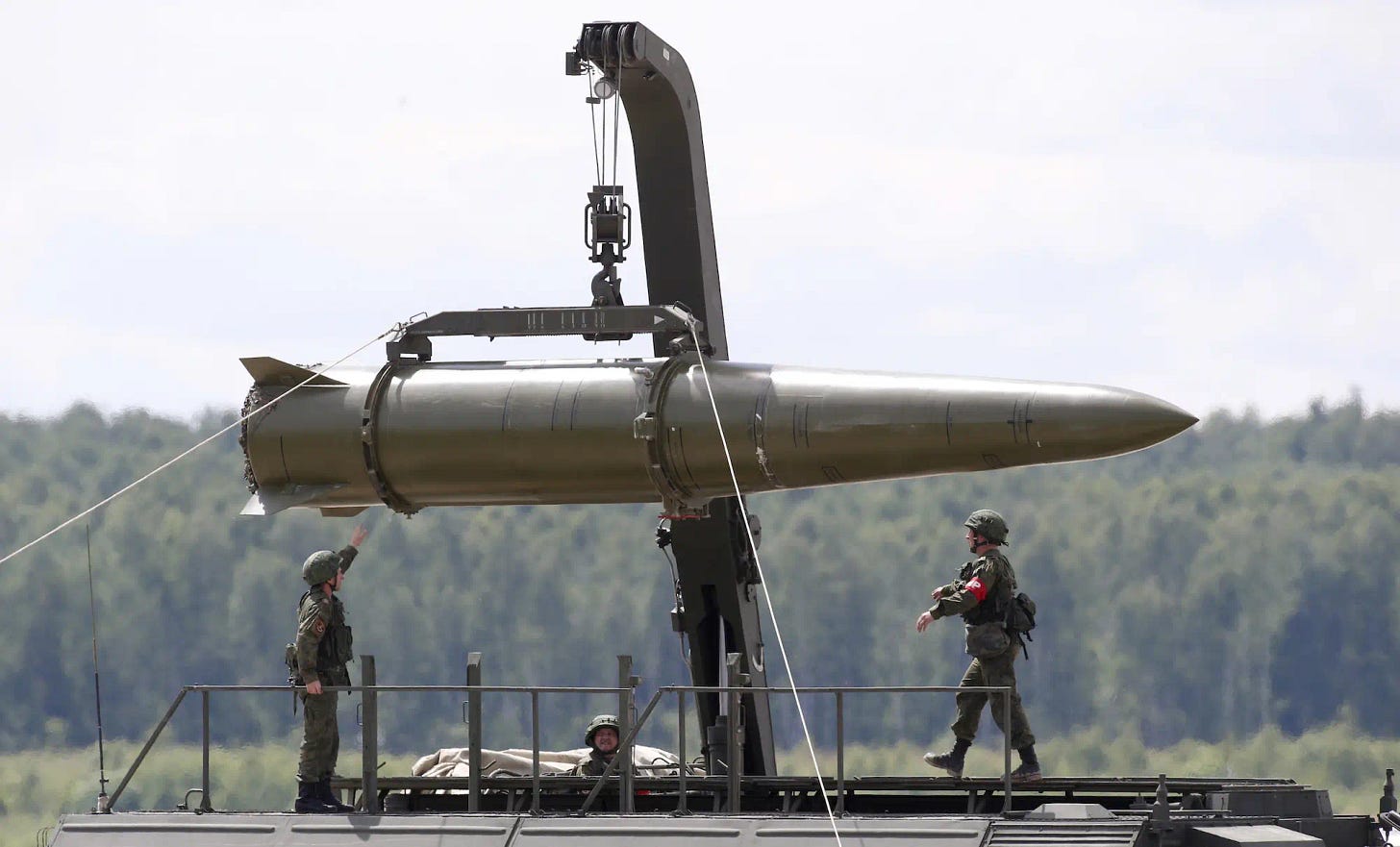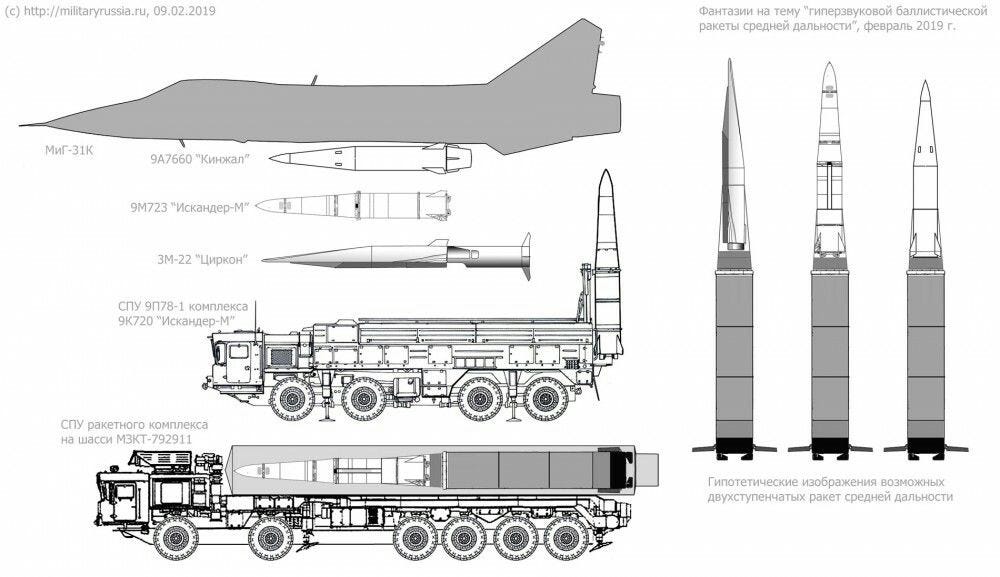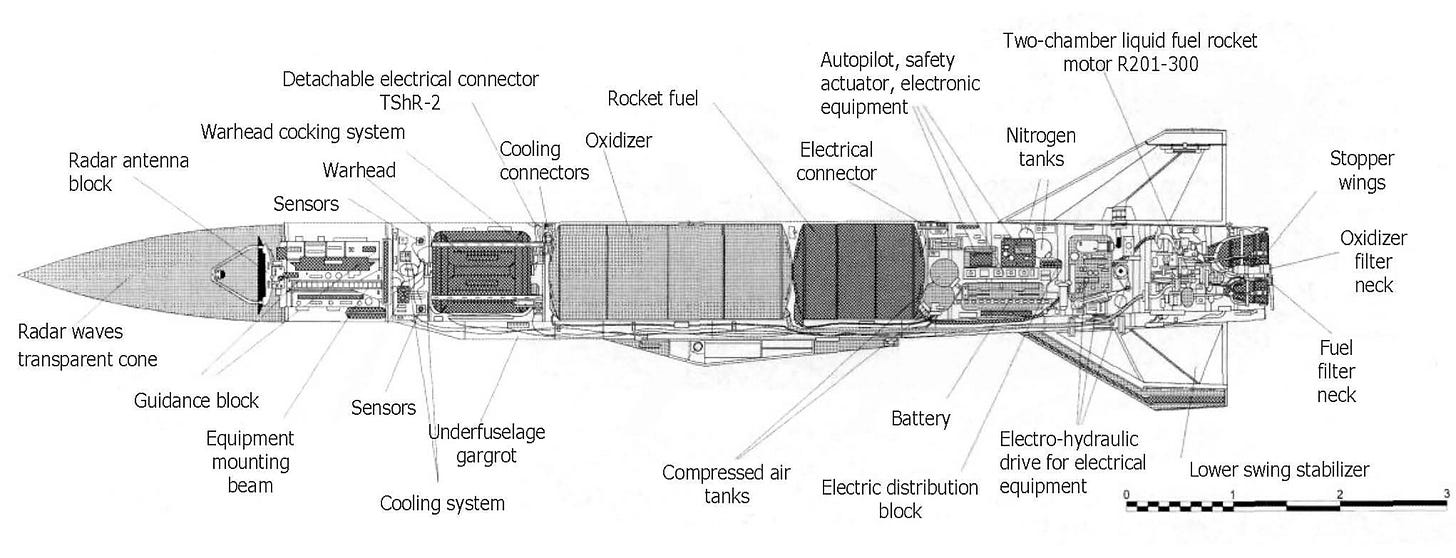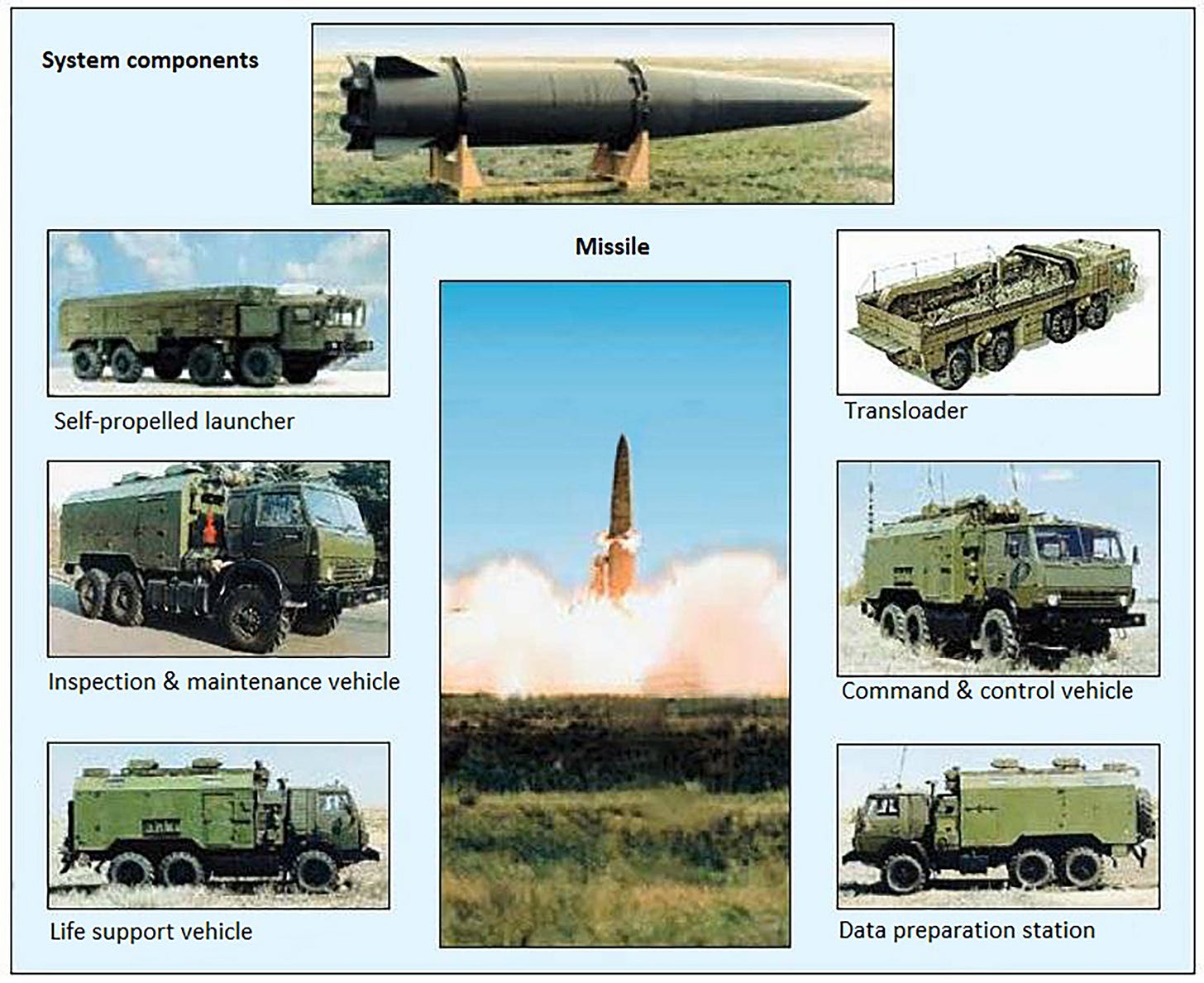Russia's Defense Ministry announced recently that the armed forces would hold drills involving tactical nuclear weapons. This announcement caused some "steering" in the West, and comments in the media already hinted at potential limited nuclear attacks on the tactical level.
This is not a new story—the Western media already "calculated" the possibility of Russia using tactical nuclear weapons in an attempt to stop the "victorious" Ukrainian advance during the second half of 2022, as well as to stop the Ukrainian offensive in 2023. As predicted by knowledgeable analysts (who are not present in the Western media), this was just one of many scenarios. Ukrainian advances were stopped in their tracks without the use of tactical nukes, and the tide turned irrevocably against the Kiev regime.
As the much-announced Western help is about to arrive and the chance of open involvement of the Western militaries on the ground is a real possibility, Russia decided to give a warning.
What are tactical nuclear weapons? This question is easy to answer for professionals, but further elaboration for the general public is needed so they can understand the subject without falling under the usual media frenzy.
Unlike nuclear intercontinental ballistic missiles, tactical nuclear weapons for use against troops on the battlefield are less powerful and have a yield of as little as 1 kiloton (the energy equivalent of one million kilograms of TNT).
Tactical nukes are battlefield weapons and can come in several different platforms and methods of delivery, such as aerial bombs, warheads for tactical short-range missiles, or artillery munitions. The key feature is compactness, meaning the small size allows them to be concealed, especially during the transport to the designated battlefields.
Unlike strategic weapons, tactical weapons never have been limited to arms control agreements. Tactical nukes are present in the arsenals of all nuclear weapon states, but their number is rarely disclosed. There are “classic” nuclear warheads as well as "neutron" bombs. The size can vary - from several hundred kilograms to single-man portable bombs such as nuclear demolition munitions weighing a few dozen kilograms.
According to Russia’s nuclear doctrine, the role of nuclear weapons is a deterrent against aggression. Key elements include a no-first-use (NFU) policy, wherein Russia has stated not to employ nuclear weapons unless first attacked by an adversary with nuclear or other weapons of mass destruction. Russia’s nuclear doctrine allows for varying levels of nuclear use in conflicts—raising concerns about escalation risks in regional conflicts.
It is nearly impossible to disaggregate Russia’s tactical nuclear warhead manufacturing capability. Currently, Rosatom manages two serial production complexes:
Electrokhimpribor at Lesnoy (Sverdlovsk-45), and
Device-Building Plant at Trekhgorny (Zlatoust-36)
According to some sources, the Sverdlovsk-45 complex specializes in manufacturing tactical nuclear warheads.
Russia constantly modernizes its nuclear delivery systems. Western intelligence estimated that the design of Russia’s warheads requires them to be maintained more frequently and completely rebuilt approximately every 10 years.
Russian enterprises are capable of full warhead production facilities meaning they can manufacture new warheads, perform maintenance on the existing stockpiles, and refurbish the old ones. These enterprises are under direct government control, so the authorities may prioritize activities. For example, the Twelfth Main Directorate removes old warheads from the stockpile and their general security.
Last year, Russia moved some of its tactical nuclear weapons into the territory of Belarus. President Lukashenko had long urged Moscow to station nuclear weapons in his country, which has close military ties with Russia.
Neither president said how many nuclear warheads were moved, but only that Soviet-era facilities in Belarus were readied to accommodate them and that Belarusian pilots and missile crews for Iskander systems were trained to use them. Any further “information” would be speculation. As of today, the warheads have remained under Russian military control.
Both presidents said that nuclear weapons deployment to Belarus was intended to counter the perceived Western threats. The existence of weapons with nuclear material is not unknown in Ukraine. In 2023, President Putin specifically indicated the U.K. delivery of 120 mm armor-piercing shells containing depleted uranium. The majority of this ammunition was destroyed in precise Russian strikes and the traces of radioactivity after the strike were detected as far away as Germany.
The deployment of tactical nuclear weapons to Belarus, which has a 1,000+ km border with Ukraine and the Baltic states, would allow RuAF and missiles to reach potential targets there more easily and quickly if Moscow decides to use them. It has also extended Russia’s capability to target several NATO allies in Eastern and Central Europe.
According to Igor Korotchenko1, editor-in-chief of the National Defense magazine, the current exercises will consist of several stages.
Logistics - transfer of nuclear warheads from warehouses and storage bases of the 12th Main Directorate of the Ministry of Defense of Russia;
Technical - docking, verification, and technical preparation after the warheads are installed in the appropriate carriers (Iskander-M tactical missile systems, front-line aircraft of the Russian Aerospace Forces, Kalibr sea-based cruise missiles);
Tactical - Practicing the procedures for obtaining authorization for combat use from the Supreme Commander-in-Chief;
Combat - unlocking the corresponding warheads. Entering flight tasks. Practical application against objects and groups of aggressor troops.
According to Korotchenko, such exercises have not been held since the Cold War.
How many nuclear weapons does Russia have today?
“As of early 2024, we estimate that Russia has a stockpile of approximately 4,380 nuclear warheads assigned for use by long-range strategic launchers and shorter-range tactical nuclear forces. This is a net decrease of approximately 109 warheads from last year, largely due to a change in our estimate of warheads assigned to non-strategic nuclear forces. Of the stockpiled warheads, approximately 1,710 strategic warheads are deployed: about 870 on land-based ballistic missiles, about 640 on submarine-launched ballistic missiles, and possibly 200 at heavy bomber bases. Approximately another 1,112 strategic warheads are in storage, along with about 1,558 nonstrategic warheads. In addition to the military stockpile for operational forces, a large number—approximately 1,200—of retired but still largely intact warheads await dismantlement, for a total inventory of approximately 5,580 warheads”2

According to Oleg Bukharin3, Russia has a total warhead manufacturing capacity of 7,000 per year (maximum). Realistically, we can assume that Russia is only able to produce 2,000 plutonium pits per year, meaning to produce 2,000 new warheads annually. With this number and refurbishing the older warheads, the potential number of tactical warheads is formidable.
Some may say this is a small number, but it is more than enough to fully equip several brigades with tactical nukes that can radically turn the tide on the battlefield.
Russian Army missile brigades equipped with nuclear-capable missiles have 9K720 Iskander (SS-26) systems. There is also an older OTR-21 Tochka-U (SS-21) system, but it has been officially withdrawn from the Russian force. However, some quantities are in reserve storage, and in the case of an all-out war, they may be retrieved. Belarus has some number of them.
Long story short, the 9K720 Iskander system is the main ground forces system that can be equipped with nuclear warheads. So far, during the Special Military Operation, Iskander has proved itself an unstoppable ballistic missile system.
During the Special Military Operation, Russia has used and will continue to use nuclear-capable weapons, such as Kh-101 cruise missiles (the nuclear version is designated as Kh-102), 3M–54 Kalibr cruise missiles, 9-A-7760 Kinzhal aero-ballistic hypersonic missiles, and old air-launched Kh-22 cruise missiles. There are reports of Kh-55 de-nuclearized cruise missiles.
When nuclear warheads are added to the Kinzhal aerobatic missile, the story takes a different turn simply because, so far, there is no Western system that can intercept it despite propaganda efforts by the Ukrainian side to prove that they are able to intercept Iskander and Kinzhals with the US supplied PAC-2 and PAC-3 systems.
The compactness of the warhead also allows it to be used in cruise missiles such as Kaliber and Onyx, but these are easier to intercept. In the case of tactical use, the major delivery systems will likely be Iskander and Kinzhal.
As already proven during the course of the Special Military Operation, the Iskander system is an ideal delivery system for tactical nukes. One Iskander brigade typically consists of 12 launchers and each launcher has two missiles. That allows a salvo of 24 missiles at any given time within the range. A salvo enough to stop any sized opponent in their tracks. If the Western military enters Ukraine, the 100K or so troops could be easily annihilated. So far, only “volunteers” and “advisors” are involved, but time will tell what may happen next.
Let's now talk about hypothetical situations or playing the game of the Western analysts:
In one of the scenarios, the Ukrainian army is able to punch through the Russian defense lines and rapidly advance toward Crimea. Many Western analysts predicted that in this case Russia will be forced to use the tactical nukes to stop the advancing Ukrainians but the chances that something like that ever happen are minimal. The much-announced Ukrainian offensive failed miserably and with enormous casualties and the overall state of the armed forces is grim. The Western allies started deliveries of the ATACMS missiles for M270 and M142 systems and the F-16 is coming. It is worth mentioning that Russia already stated that every F-16 (or any other Western aircraft) may be considered a potential nuclear weapon carrier and will act accordingly. It is not out of option that F-16 may carry a dirty bomb that is not technically nuclear but rather equipped with radioactive material. With this, potential F-16 bases in Ukraine and abroad (mostly Romania and Poland) may be subjected to intensive attacks. Russia will not attack first with tactical nukes but will attack if the intelligence finds and confirms that there is a probability that maybe dirty nuclear weapons are to be employed.
In any case, even just one attack can permanently disable any base or airfield.
As the UK is playing a tough guy role and top leadership is frothing about British weapons attack on Russian territory and French President is talking about the deployment of the French military in Ukraine, the political game was put on a higher level meaning that the Russian foreign office warned both Brits and French that the game they are playing may escalate against them. In any case, Russia has enough means to inflict heavy blows to both Ukraine and their so-called Western partners without the use of tactical nukes but the warnings have been issued and now the ball is on the Western side of the pitch. In this game, Ukraine is not the side where anybody asks for an opinion or plays any executive role. Ukrainian role is only to fight Russia on behalf of the Western allies.
Sources:
Russian nuclear weapons, 2024 - Bulletin of the Atomic Scientists (thebulletin.org)
Gunnar Arbman, Charles Thornton: Russia's Tactical Nuclear Weapons, Part II: Technical Issues and Policy Recommendations
Mike Mihajlovic: Rockets and Missiles Over Ukraine: The Changing Face of Battle
Thank you for reading Black Mountain Analysis. This post is public so feel free to share it.
If you like the article (and much more articles regarding military subjects will come) you can buy me a coffee:
https://www.buymeacoffee.com/mmihajloviW
Россия перешла к действиям: Ядерные учения - больше не сигнал Западу, уверены эксперты (tsargrad.tv)
Russian nuclear weapons, 2024 - Bulletin of the Atomic Scientists (thebulletin.org)
Oleg Bukharin: “Downsizing Russia’s Nuclear Warhead Production Infrastructure”, “A Breakdown of Breakout: U.S. and Russian Warhead Production Capabilities,” and "Technical Aspects of Proliferation and Non-Proliferation”
[i] Edited by Piquet (EditPiquet@gmail.com)












Really interesting article. Especially appreciate the technical specs you included. Cheers thanks mate.
Here is a related sarcastic take:
«Western Leaders Suddenly Remember Putin Is, In Fact, President of Russia, Following Minor Nuclear Scare»,
https://complexiathesinker.substack.com/p/western-leaders-suddenly-remember